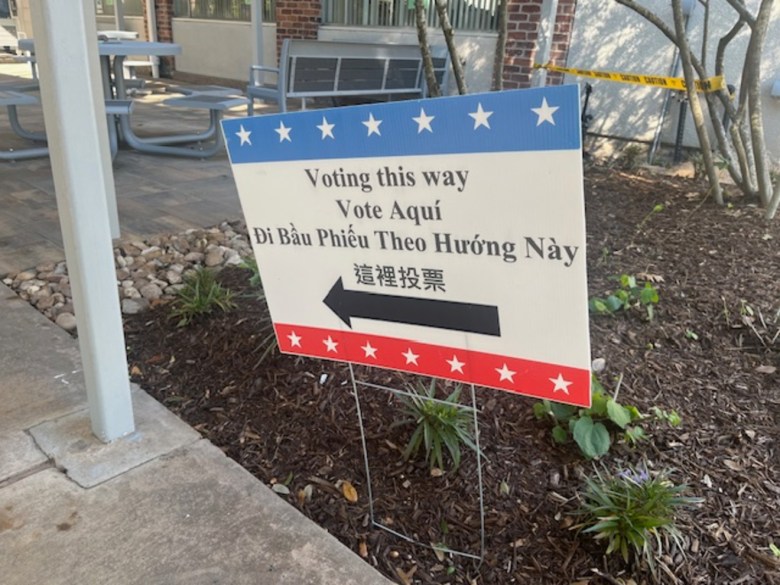BARC Wants to Empty the Shelter
There’s one simple way to make sure abandoned puppies and kittens find a good home: Adopt them.
As of Monday morning, 232 potential pets were available for adoption at Houston’s BARC Animal Shelter. The city-owned facility is one of more than 300 across the country participating in BISSELL Pet Foundation’s Empty the Shelters event, which provides extended operation hours and discounted adoption fees through October 15.
For those who have been contemplating pet adoption, now is the time, said Deputy Shelter Director Cory Stottlemyer. During the promotional event, dog and puppy adoptions are $20 and cat and kitten adoptions are $10.
The fees include spay/neuter surgery, dewormer, age-appropriate vaccinations, rabies vaccination, flea prevention, a pet microchip, and a one-year pet registration with the City of Houston.
The shelter reported earlier this year that it changed its policies to improve oversight of the dog rescue process. They’re now more closely vetting adopters to ensure that a “rescue organization” — sometimes just a breeder with a Facebook page — isn’t adopting dozens of animals at one time just to move them to deplorable conditions or abandon them at an out-of-state location.
When the policy changes became effective March 1, advocates expressed concern that more animals would be euthanized. Stottlemyer said BARC consistently maintains a high volume of animals, but the live release rate has stayed steady since March.
According to data on the BARC website, more than 4,600 pets were adopted into homes during the 2023-24 fiscal year and over 8,700 were transferred to rescue organizations. About 2,800 were euthanized.
In the 2024-25 fiscal year, which ended in June, more than 5,700 pets were adopted into homes and 8,500 were transferred to rescue organizations. About 4,000 were euthanized.
“We built up our adoption counseling volunteer force to make sure we’re matching the right adopters with the right pets, to make sure it’s the perfect fit and animals are going into homes where they’re going to stay,” Stottlemyer said.
The shelter also changed its notification period for the “at-risk list” from 48 hours to 24 hours.
Lynn Fischer, an animal rights advocate in Pennsylvania, said it appears to her that more animals are being put to sleep at BARC because of the shorter notice period, which prevents rescues from having enough time to step in. Fischer claims that from early June through mid-September, BARC euthanized at least 130 puppies, data she gathered from the Michigan-based Loving Paws nonprofit.
“Disturbingly, the majority were euthanized the very same day they were placed on the at-risk list,” Fischer said. BARC also no longer publicly posts its euthanasia list, which, in the past, led to mass adoptions from unvetted agencies, shelter officials have said.
Fischer said shelters across the country are in crisis, but she sees particularly high numbers of euthanasia in Texas and California. “I don’t think people are aware of how bad the shelter crisis is,” she said. “This is the worst I’ve ever seen. I think part of it is irresponsible breeders and another part is irresponsible owners.”
Some people feel like they can no longer afford their pets and aren’t aware that there are services like Houston Humane Society’s Pet Pantry and free spay and neuter clinics, Fischer added.
“I’m not looking to blame anyone,” she said. “I’m trying to find solutions. There are so many solutions, but until someone who has the ability to do so helps to implement those solutions, you feel like you’re spinning your wheels.”

Fischer said the best thing the BARC can do is raise awareness about the current shelter situation and communicate with not just local clients and adopting families, but with advocates in other states.
Stottlemyer said BARC does those things and emphasized that Empty the Shelters isn’t a response to a crisis situation. The shelter doesn’t shy away from letting the public know when they’re at capacity, but they’re not right now, at least for dogs, he said.
The city-owned facility has room for about 350 dogs and 100 cats. They’re currently housing 290 dogs and 106 cats. The numbers fluctuate daily because BARC’s animal enforcement officers are charged with protecting public safety, and they respond to 311 calls for strays, aggressive animals, bite cases, and animal cruelty cases. People also turn in strays, Stottlemyer said.

Many factors contribute to the rising stray population in Houston, notably the warm climate and a mindset of some pet owners that their animals should be able to “roam free,” creating an opportunity for breeding, Stottlemyer said.
“Unfortunately, those animals can go out year-round and create litters, and we have a dumping problem in the city as well,” he said.
The deputy director acknowledged that his team tries to market in the Houston area through adoption events and neighborhood gatherings, and they rely heavily on partnerships. They do, however, respond to advocate inquiries and work with numerous partners outside of Texas, he said.
“There’s no guaranteed outcome for any of our animals,” Stottlemyer said. “We are a high-intake shelter. Most of our animals leave to rescue partnerships. If an animal isn’t adopted, it still has other pathways to finding an outcome.”
“Animals that are here for a long time end up on our length-of-stay list,” he added. “If we’re at capacity, those animals may be placed on our euthanasia list. We’re not at a major breaking point right now, but all it could take is one week of high intake by the enforcement team to push us there. If animals don’t get adopted, it just depends on whether our rescue partners can step up or what our capacity looks like.”
When animals that are candidates for euthanasia, BARC notifies its rescue and qualifying foster partners, giving them 24-hour notice, Stottlemyer said.
“We send out leads well in advance of that notice for a lot of our animals, ones that have medical issues or length-of-stay animals,” he said. “We have a regular list that goes out before they’re ever candidates for euthanasia.”
BARC attempts to adopt to families in Houston and Harris County, and they don’t say there’s an urgent need unless there actually is one, Stottlemyer reiterated.
“That doesn’t necessarily result in people coming in and adopting,” he said, referring to a marketing strategy that animals must be adopted or they’ll be euthanized. “A lot of times that messaging gets co-opted by people who are well-meaning and people who have a vested interest in animal welfare but it drives, ultimately, negativity toward the shelter that doesn’t result in outcomes.”
This article appears in Jan 1 – Dec 31, 2025.
Related

Reign Bowers is an outdoor enthusiast, adventure seeker, and storyteller passionate about exploring nature’s wonders. As the creator of SuperheroineLinks.com, Reign shares inspiring stories, practical tips, and expert insights to empower others—especially women—to embrace the great outdoors with confidence.




Post Comment